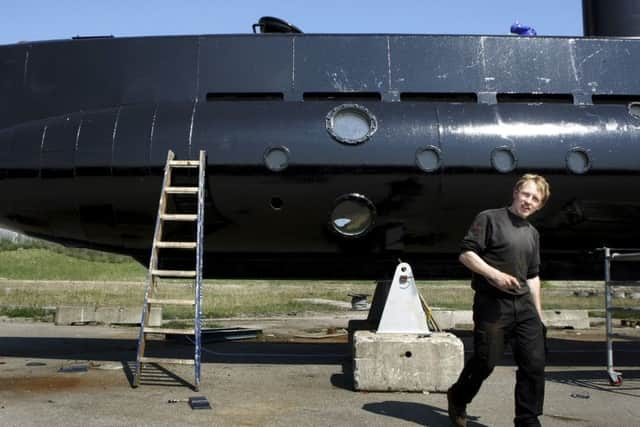Dominic Hinde: Kim Wall deserves more than Nordic Noir cliches


When the disappearance of Swedish journalist Kim Wall in the submarine of Danish inventor Peter Madsen was reported on Radio 4’s Today programme it was described as being like ‘real-life Nordic Noir’ as the item was trailed by John Humphrys.
The New York Times, too, drew parallels with the Scandinavian crime genre, even going so far as to contact the screenwriter behind The Bridge - one of the most popular ‘Scandi-dramas’ - for comment.
Advertisement
Hide AdAdvertisement
Hide Ad“I’m not at all comfortable with commenting or reflecting over real crimes in this way,” Hans Rosenfeldt wrote in an email to the newspaper.


The incident, in which the freelance journalist disappeared after boarding Madsen’s experimental submarine and was subsequently found dismembered at sea, is much more than an ‘up next’ news item to pique interest in the morning headlines.
Take away the fantastical trappings and the story is one of a woman working alone who trusted someone else with their safety and died as a result.
Madsen himself was already known in Denmark as an eccentric figure, earning the nickname ‘Rocket Madsen’ for his work on rocket motors and his space-faring ambitions.
To begin with there was speculation that Wall had been the victim of an accident on the experimental vessel and that its inventor had panicked, or that she had somehow fallen overboard.


On Wednesday morning however, Danish police confirmed that body parts found in the water off Copenhagen matched Wall’s DNA.
Jens Møller, head of the murder investigation, also revealed that Wall’s blood had been found in the submarine after it was recovered during an apparently intentional attempt to sink it.
Despite the new evidence, Madsen still maintains that Wall’s death was an accident and has offered no clues as to how her body came to be mutilated and dumped at sea.
Advertisement
Hide AdAdvertisement
Hide AdFreelance journalism, often undertaken with only the tacit approval of editors and without the support networks of major news organisations means going places and doing things that place you in sometimes tricky situations.
For female journalists the risk is even greater due to the potential for sexual assault and other types of gender based violence above and beyond the general exposure to risk faced by journalists working alone.
Journalism is also a job like any other, and the pressure to produce stories that will be a success drives journalists to push themselves out of the safety and comfort zones they might stay in when each commission means a pay check.
The details of the case may have been surreal, but Wall is only the latest in a series of female journalists to have died for their work.
Nobody knows, and we may never know, exactly how Wall died.
Madsen has denied a charge of negligent manslaughter, but questions remain over what really happened on the submarine.
Theories in the Scandinavian press range from premeditated murder to anger at rejection of sexual advances or a desperate wish to keep his reputation intact, as well as Madsen’s original defence that she had been the victim of an accident.
The circumstances are so hard to ascertain that without a confession from Madsen himself it could be impossible for the prosecutor to prove exactly what occurred out in the Öresund straight due to lack of evidence.
Advertisement
Hide AdAdvertisement
Hide AdWhatever the events leading up to Kim Wall’s death, her original story on Madsen the maverick inventor and his creation will now never appear.
Rather than dismiss it as a bizarre piece of Nordic true crime (that will in all likelihood be dramatised or turned into a narrative documentary in time by commissioning editors), Wall was a real journalist going out of her way to tell an interesting story she did not need to tell.
• Dominic Hinde is a European and environmental journalist, and the author of the book ‘A Utopia like Any Other: Inside the Swedish Model’